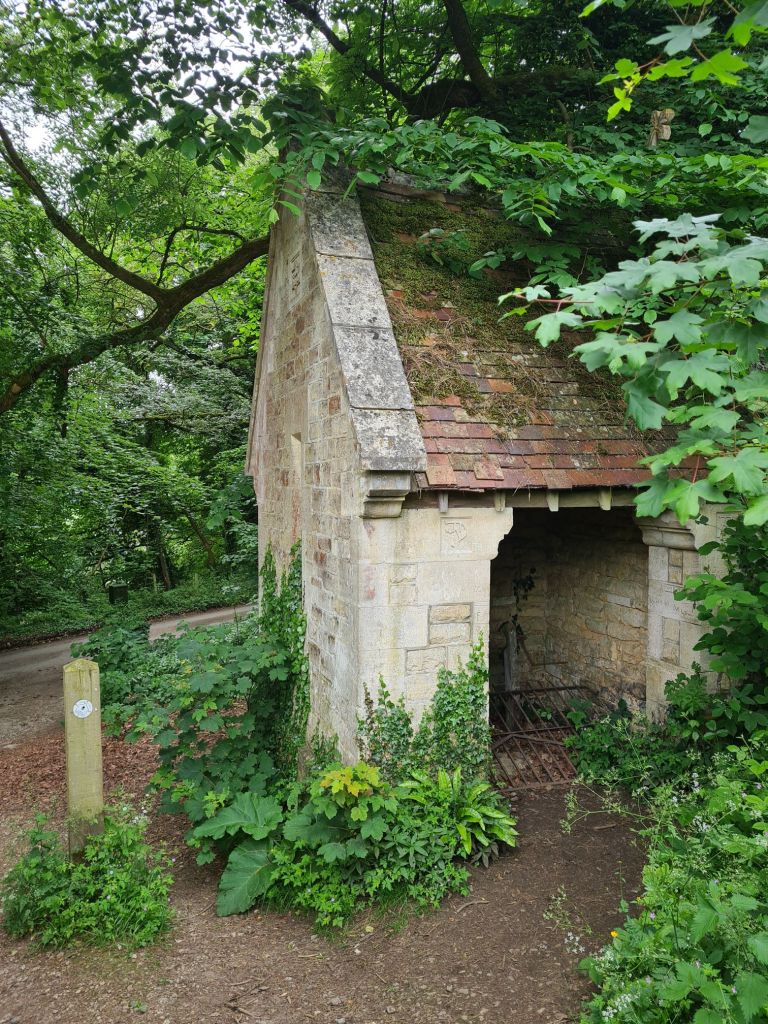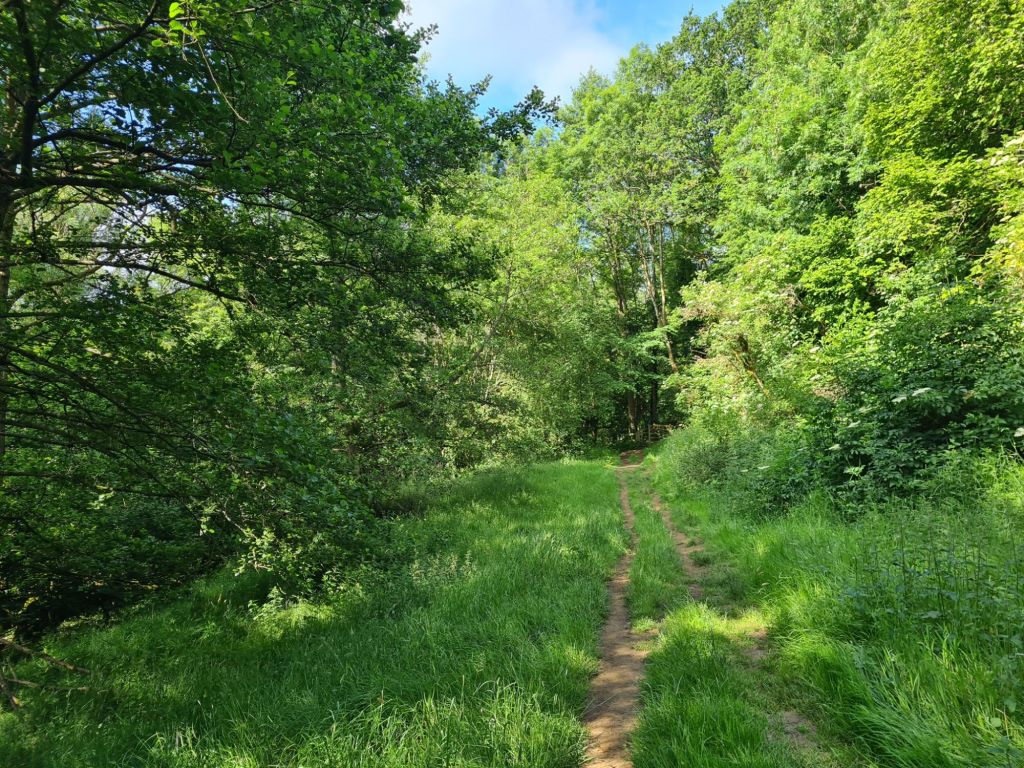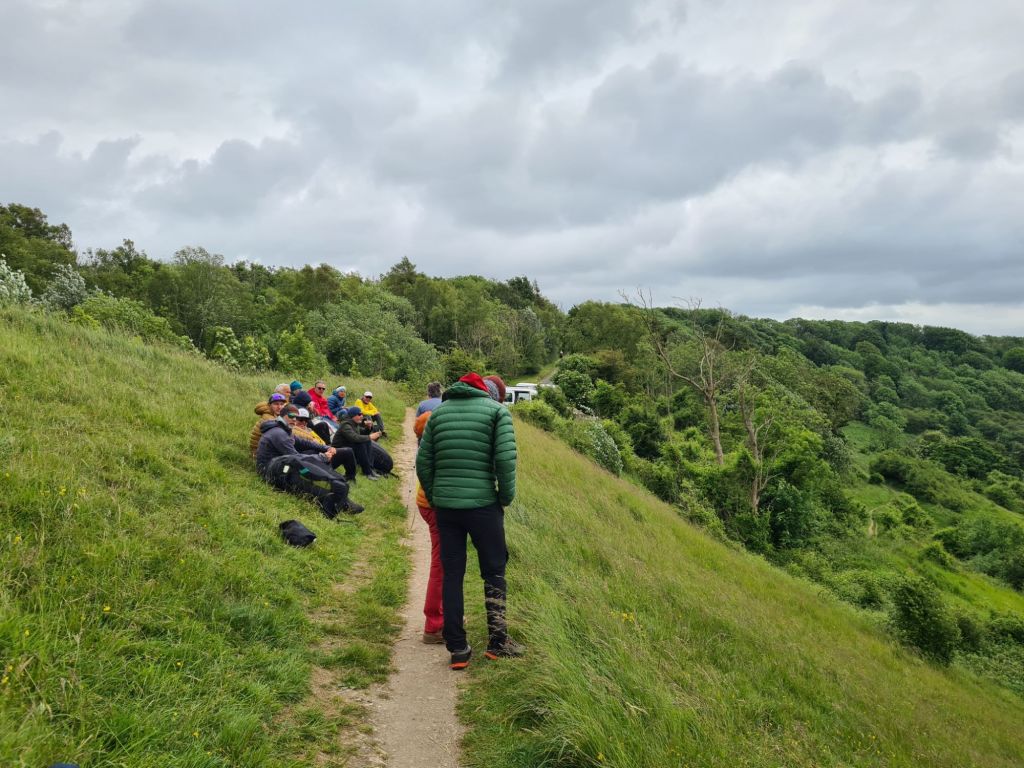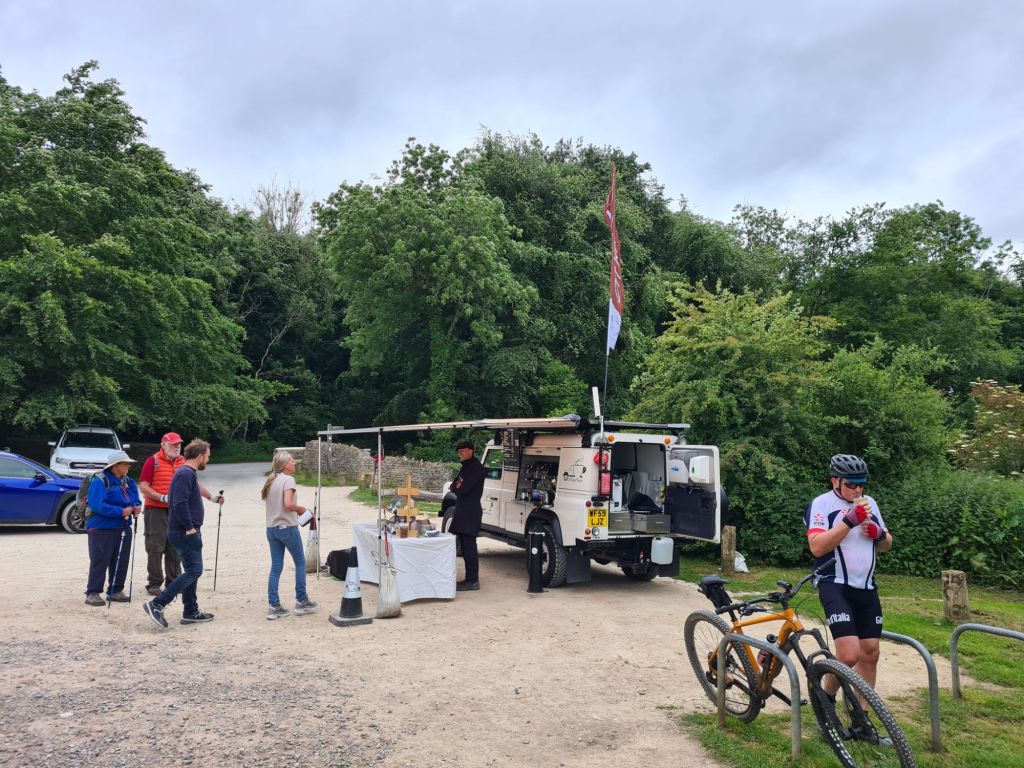A day of farmland meadows, ancient woodlands, lonely villages and views

Day Six: Painswick to King’s Stanley. 9.5 miles/15.5km
Within a few minutes of leaving our accommodation we were into fine countryside walking. We were almost last of the pack too, as we were not, as usual, the speediest in getting started. That was remedied when we were passed by a couple speedily returning to Painswick. A mobile had been left in their room. That last look round before departing is always worth the effort. We passed a ‘half way’ milestone beside the path. Quite why it is where it is, is a bit of a mystery. 47 miles on one side, 55 on the other.


“Whoer the Bucketful upwindeth, let him bless God, who water findest. Yet water here but small availeth. Go seek that well that never failest”
well head inscription
Today was another short day, but still had much of interest. Not least the diversionary climb up Scottsquar Hill, pockmarked by numerous quarries, and onward to the Haresfield Beacon promontory, the site of yet another hill fort. Before that, it was similar walking to yesterday’s enjoyable day. Following the escarpment through shaded beech woodlands on a wide, soft, occasionally muddy track, that gradually improved. The sun shone through the canopy, patches of light in the darkened interior. Nuthatches quip quip-ing, Great Spotted Woodpecker’s rattling, a Wren trilled, chaffinches, Chiff-chaffs, Robins, the air was full with song, accompanied by the irregular clip-clip of pole tips as we slowed our pace on the ups and quickened slightly on the downs.


The trail left the protection of the woodlands and moved out onto the exposed tops of Haresfield Beacon and to the expansive views of Shortwood. The sky grew greyer and that familiar cold wind whistled up the slopes below. We donned waterproofs, not because it was raining, but just for a bit of protection from wind-chill. This is obviously a popular area and there were quite a few dog-walkers and groups of friends out for a mooch about. Stroud is very close and if I lived here I would do the same. A short drive puts you high up on the open spaces, orchids abound in the grasslands on the slopes. A lone parascender took to the air ahead, stayed aloft briefly, but soon dropped to one of the fields far below. It was simply too gusty and we came across his mates further on. All German, sitting on their wrapped bundles in the grass, waiting for the wind to even out. I asked who would be brave enough to go first and they indicated the distant figure below, now slowly making his way back up- “him, always first, always last“. Apparently the keenest and most impatient amongst them by far.



Leaving a fortuitous coffee wagon, that supplied tea and cake at just the right time on our walk, the trail swings round on an escarpment that seemed to have momentarily forgotten its path. Walking through Standish Wood we occasionally had views of Stroud below us on our left, and to our right, the Vale of Gloucester and the River Severn snaking its way through the landscape. Our trail now began to drop. We started to encounter more agricultural farmland- crops, young enough to be anonymous. Though, even I could identify the vines growing in profusion on the lowest slopes.




We dropped further and crossed the railway. Obviously routed here due to the relative ease in crossing the escarpment at this point. However it was not the only transport artery to do so.

The construction of the eight mile long Stroudwater Canal, opened 1779, linking Stroud to the River Severn, was one of the final efforts to shore up the dying wool trade. Other efforts from the government had been still more desperate. The ‘Burial in Woollen Act’ of 1666 and later, in 1679 stated that “no corps of any person… to be buried in any stuffed or things other than what is made of sheep’s wool only”. It was repealed in 1814.
We left the trail at the roadbridge over the canal for the mile or so walk to tonight’s halt. We were staying at the impressive, and expensive, Grade II listed seventeenth century Stonehouse Court Hotel tonight so had no need to venture out for our evening meal and had booked a table for 19.45 in this Tudor former manor house.

Tonights halt is a prime example of the more comfortable manner in which a trail can be tackled. Our room is large and comfortable and the view from our room window over the Cotswold hills lovely. More importantly, our evening meal was excellent. Three courses, and we ignored the expense. We are halfway(ish) after all and this rounded off another excellent day on the Cotswold Way in fine style.

- Cotswold Way- National Trail
- Cotswold Way: Chipping Campden to Stanton
- Cotswold Way: Stanton to Winchcombe
- Cotswold Way: Winchcombe to Dowdeswell
- Cotswold Way: Dowdeswell to Birdlip
- Cotswold Way: Birdlip to Painswick
- Cotswold Way: King’s Stanley to Dursley
- Cotswold Way: Dursley to Wotton-under-Edge
- Cotswold Way: Wotton-under-Edge to Old Sodbury
- Cotswold Way: Old Sodbury to Cold Ashton (Pennsylvania)
- Cotswold Way: Cold Ashton to Bath

Thankyou again , I am particularly fond of orchids , from having worked with them in high school ( 1974 ) . My time finnally allowed me to read all the previous posts , I am retired and am taking care of my elderly Mother … it can be a challenge at times , not being able to ” hit ” the woods as much as I would like . I understand about the hurting knees , many times I have had to sit and use my arnica salve to reduce the inflamation so that I could go again the next day. I had evetually get a brace too but I’m not going to just quit . My prayers for healing to you.
LikeLiked by 1 person